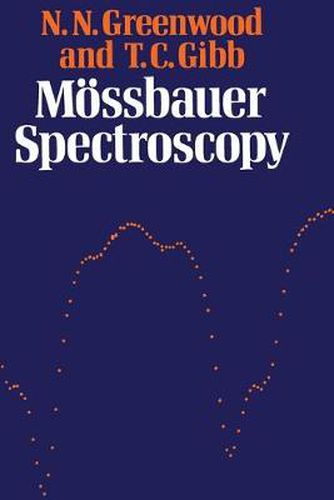Readings Newsletter
Become a Readings Member to make your shopping experience even easier.
Sign in or sign up for free!
You’re not far away from qualifying for FREE standard shipping within Australia
You’ve qualified for FREE standard shipping within Australia
The cart is loading…






This title is printed to order. This book may have been self-published. If so, we cannot guarantee the quality of the content. In the main most books will have gone through the editing process however some may not. We therefore suggest that you be aware of this before ordering this book. If in doubt check either the author or publisher’s details as we are unable to accept any returns unless they are faulty. Please contact us if you have any questions.
Rudolph Mossbauer discovered the phenomenon of recoil-free nuclear resonance fluorescence in 1957-58 and the first indications of hyperfine interactions in a chemical compound were obtained by Kistner and Sunyar in 1960. From these beginnings the technique of Mossbauer spectroscopy rapidly emerged and the astonishing versatility of this new technique soon led to its extensive application to a wide variety of chemical and solid-state problems. This book reviews the results obtained by Mossbauer spectroscopy during the past ten years in the belief that this will provide a firm basis for the continued development and application of the technique to new problems in the future. It has been our aim to write a unified and consistent treatment which firstly presents the basic principles underlying the phenomena involved, then outlines the experimental techniques used, and finally summarises the wealth of experimental and theoretical results which have been obtained. We have tried to give some feeling for the physical basis of the Mossbauer effect with out extensive use of mathematical formalism, and some appreciation of the experimental methods employed without embarking on a detailed discussion of electronics and instrumentation. However, full references to the original literature are provided and particular points can readily be pursued in more detail if required.
$9.00 standard shipping within Australia
FREE standard shipping within Australia for orders over $100.00
Express & International shipping calculated at checkout
This title is printed to order. This book may have been self-published. If so, we cannot guarantee the quality of the content. In the main most books will have gone through the editing process however some may not. We therefore suggest that you be aware of this before ordering this book. If in doubt check either the author or publisher’s details as we are unable to accept any returns unless they are faulty. Please contact us if you have any questions.
Rudolph Mossbauer discovered the phenomenon of recoil-free nuclear resonance fluorescence in 1957-58 and the first indications of hyperfine interactions in a chemical compound were obtained by Kistner and Sunyar in 1960. From these beginnings the technique of Mossbauer spectroscopy rapidly emerged and the astonishing versatility of this new technique soon led to its extensive application to a wide variety of chemical and solid-state problems. This book reviews the results obtained by Mossbauer spectroscopy during the past ten years in the belief that this will provide a firm basis for the continued development and application of the technique to new problems in the future. It has been our aim to write a unified and consistent treatment which firstly presents the basic principles underlying the phenomena involved, then outlines the experimental techniques used, and finally summarises the wealth of experimental and theoretical results which have been obtained. We have tried to give some feeling for the physical basis of the Mossbauer effect with out extensive use of mathematical formalism, and some appreciation of the experimental methods employed without embarking on a detailed discussion of electronics and instrumentation. However, full references to the original literature are provided and particular points can readily be pursued in more detail if required.